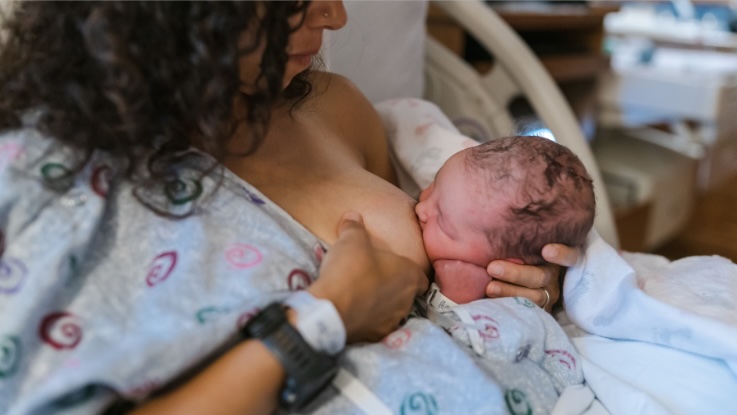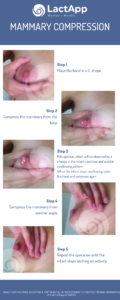
Breast compression technique
Breast compression is a simple technique that can help improve milk flow and transfer when there are difficulties with breastfeeding. It consists of continuous compression of the breast of the breastfeeding person so that the infant’s suckling is usually more effective.
Breast compression techniques can help in different situations, such as:
- Infants with difficulties in gaining weight
- Infants with Intrauterine Growth Restriction (IUGR) or low birth weight
- Newborns that are very sleepy or present immature suckling – to prevent difficulties in milk transfer.
- During relactation, when the proportion of direct breastfeeding is being increased, to encourage infant suckling.
- Situations of breast refusal due to low milk supply or motor difficulties of the infant, so breastmilk flows easier and activates the suckling-swallowing reflex.
- Other situations of infant’s discomfort at the breast due to poor milk flow.
Once the infant is latched onto the breast, the steps to perform breast compressions are as follows:
- Place the hand in the form of a C shape, and hold the breast by resting the thumb on the upper area of the areola and the other fingers on its lower area.
- Press the breast tissue toward the ribs, toward the base of the mammary gland.
- From this moment on, the infant will change the suckling pattern to a movement of deep suckling with swallowing.
- Once the infant stops swallowing, change the pressure points of breast compression and repeat.
Breast compressions are a technique that is easy to implement and can encourage the mother because she sees that milk transfer is improving. Giving these tools to mothers may have direct implications on their sense of self-efficacy in breastfeeding.
Here you can find an infographic that includes the breast compression techniques mentioned above:
 Breast compression technique
Breast compression technique
Reference:
La Leche League GB. La Leche League GB. My baby needs more milk. 2022. Available at: https://www.laleche.org.uk/my-baby-needs-more-milk/#ExpressingYourMilk. 16/02/2022.